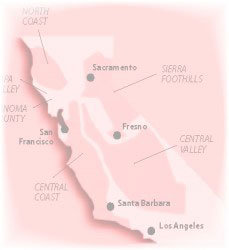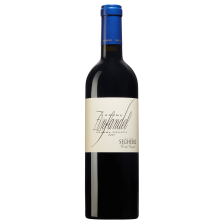America’s ‘Wine State’ and a Global Powerhouse
California proudly accounts for 95% of the United States’ quality wine output, positioning it as the fourth-largest producer of wine in the world. Although the state’s serious wine industry is often said to be only around 40 years old in modern terms, this swift rise to prominence is no accident. A blend of substantial investment, scientific innovation, and the unwavering determination of pioneering vintners has transformed California into a viticultural titan.
A Brief History and Rapid Evolution
California’s wine story began in earnest during the 19th century, thanks to European settlers who recognised the region’s potential. Phylloxera outbreaks and Prohibition halted much progress, but the industry’s revival in the mid-20th century was nothing short of remarkable. In 1976, the now-famous “Judgement of Paris” tasting catapulted California wines onto the global stage when local Chardonnay and Cabernet Sauvignon unexpectedly triumphed over French benchmarks. This watershed moment spurred further investment, experimentation, and a willingness to challenge Old World traditions.
Major Grapes and Styles
- Chardonnay: One of California’s signature varieties. Often showing ripe tropical fruit and creamy, buttery notes from oak ageing, Chardonnay can range from opulent Napa styles to leaner, crisper expressions from cooler areas like Sonoma Coast or Carneros.
- Cabernet Sauvignon: Dominant among California’s reds, particularly in Napa Valley, where the warm climate and well-draining soils create structured, bold wines with blackcurrant, cedar, and chocolate nuances.
- Zinfandel: Considered California’s “indigenous” grape, Zinfandel actually has European roots but has flourished here for over a century. It produces wines from bright and jammy to dark, spicy, and age-worthy, depending on the terroir and winemaking approach.
- Pinot Noir: Thrives in cooler coastal regions such as Sonoma, Santa Barbara, and Monterey, yielding wines with cherry, raspberry, and earthy undertones, often exhibiting a silky texture.
- Merlot: Often used for blending but also bottled as a single varietal. At its best, Merlot from California is plush, with notes of plum and chocolate.
- Syrah: Ranging from big, bold styles in warmer climates to more peppery, elegant bottlings in the cooler Central Coast, Syrah showcases significant versatility across California’s diverse regions.
- Sauvignon Blanc / Fumé Blanc: Presents refreshing citrus, tropical fruit, and grassy aromas. Some winemakers produce oak-aged “Fumé Blanc” styles, deepening texture and adding smoky hints.
- Colombard: Grown extensively in California and used in both blends and varietal wines, contributing bright acidity and fruit-driven notes.
Key Wine Regions
- Napa Valley: Famed worldwide for high-end Cabernet Sauvignon, alongside premium Chardonnay and Merlot. Visitors can explore boutique estates and iconic wineries alike.
- Sonoma County: Encompassing varied microclimates ideal for Pinot Noir, Chardonnay, Zinfandel, and more. Sub-appellations like Russian River Valley and Dry Creek Valley each have their own distinct personalities.
- Central Coast: Stretching from the San Francisco Bay area down to Santa Barbara, this vast region includes acclaimed AVAs like Paso Robles (for robust reds) and Santa Lucia Highlands (for elegant Chardonnay and Pinot Noir).
- Carneros: Straddling Napa and Sonoma, offering a cooler climate perfectly suited to sparkling wine production, Pinot Noir, and Chardonnay.
- Lodi: Known for old-vine Zinfandel and a Mediterranean-like climate, producing lush, fruit-forward reds that capture the warmth of California’s interior.
- Sierra Foothills: A historic gold-rush region with higher elevations and old-vine plantings, particularly of Zinfandel and Rhône varieties, yielding rich, spicy wines.
Scientific Innovation and Sustainable Practices
California winemaking has flourished under the guidance of institutions like UC Davis, where research and technology help refine everything from vineyard management to fermentation techniques. Many wineries champion sustainable farming, organic or biodynamic methods, and water conservation, ensuring that the state’s future remains bright for both producers and consumers.

Vintage Report
In one notable season, a relatively cool growing period with minimal heat spikes led to slower ripening, preserving acidity and aromatic complexity—particularly beneficial for white wines and Pinot Noir. Another vintage was marked by drought conditions and heatwaves, resulting in lower yields but extremely concentrated, bold red wines. Even in challenging years, California’s varied microclimates and innovative viticultural techniques often allow producers to craft wines of impressive character.
A Continual Evolution
Despite its short modern history, California has made a profound impact on the global wine scene. From game-changing events like the Judgement of Paris to ongoing experiments with lesser-known grapes and sustainable viticulture, it remains a centre of energy and creativity. Chardonnay, Cabernet Sauvignon, Zinfandel, and Pinot Noir may dominate the headlines, but behind every bottle is a tale of resourcefulness and pride—elements that ensure California’s “Wine State” moniker is well deserved.
California, deservedly known as the 'Wine State' produces 95% of America's quality wine output and is the fourth largest producer of wine in the world. Today this feat has been accomplished through investment, scientific achievement and sheer determination. All this from a region that is only 40 years old, in serious wine making terms.






